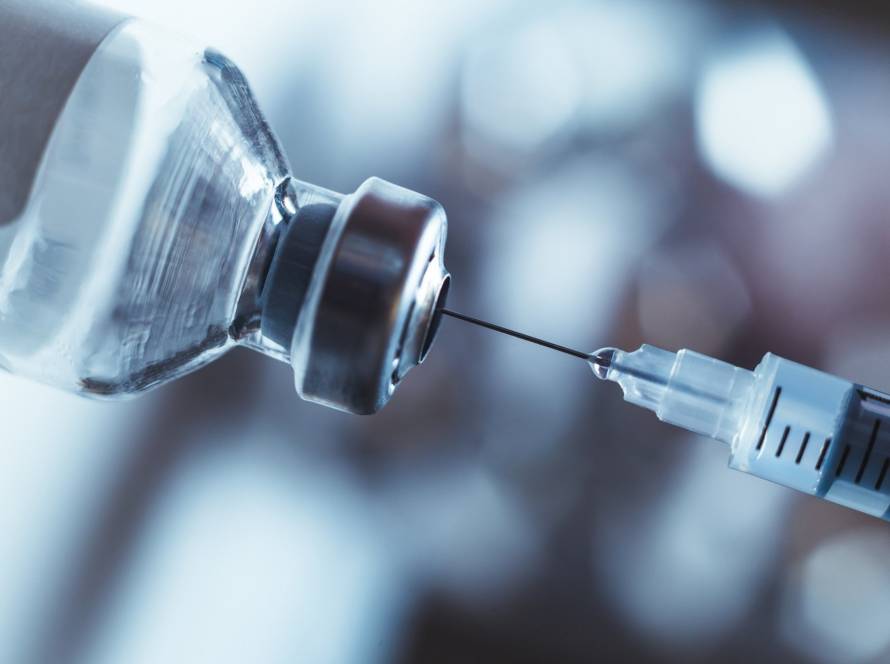The epigenetic clock represents one of the most remarkable findings in longevity research. It gives us a window into our true biological age that is different from the number of candles on our birthday cake. Our chronological age simply counts our years alive, but these molecular timekeepers measure how our bodies have aged at the cellular level.
This piece will introduce epigenetic clock, how it measures biological age and why it’s a powerful tool in longevity and anti-aging research.
What is epigenetic aging and how is it measured?
Epigenetic aging shows biological changes that occur at the cellular level throughout our lives. These changes happen through DNA modifications that don’t change the genetic sequence itself. Scientists have found that these changes create patterns that associate with health outcomes and mortality risk.
Understanding DNA methylation and biological age
Scientists measure biological age through epigenetic markers and DNA methylation stands out as the most promising biomarker for age assessment. The human genome has about 28 million CpG sites where a cytosine comes before a guanine in DNA. These sites can undergo methylation. This process adds methyl groups to cytosine and creates 5-methylcytosine, which controls gene expression by changing promoters, enhancers and gene bodies.
DNA methylation serves vital functions in the body. It changes how transcription factors bind and affects histone-modifying proteins in CpG islands. Our methylation patterns at specific CpG sites change in predictable ways as we age. These changes let scientists measure how fast we’re aging biologically.
The difference between chronological and epigenetic age
Chronological age counts the years we’ve been alive, while epigenetic age shows how well our body functions based on molecular markers. Two people born on the same day share a chronological age but might have different biological ages because of their lifestyle, environment and health conditions.
Scientists call the gap between epigenetic and chronological age “epigenetic age acceleration”. This measurement links to various health conditions, lifestyle choices and environmental exposures. People age faster when they have a higher body mass index, exercise less, eat fatty foods and smoke.
Overview of major epigenetic clocks: Horvath, Hannum, GrimAge, PhenoAge
The development of epigenetic clocks has moved through several generations:
First generation clocks focused on predicting chronological age:
- Horvath’s clock looks at 353 CpG sites across many tissues, making it useful for any tissue type. Scientists built it using 8,000 samples from 82 datasets that cover 51 healthy tissues and cell types, showing its versatility;
- Hannum’s clock works specifically with blood samples and uses 71 markers to estimate age accurately.
Second generation clocks added health outcomes:
- PhenoAge combines DNA methylation with clinical markers like creatine, C-reactive protein and white blood cell count to check health and age related risks. It predicts mortality risk better than earlier clocks;
- GrimAge combines methylation data with plasma proteins and lifestyle factors to predict death risk and long-term health. Tests show it beats all previous epigenetic clocks at predicting time to death.
Third generation clocks like DunedinPACE have emerged. These clocks measure aging speed using long-term data to track biological changes. This innovative approach helps us better understand how our bodies age at the molecular level.
What epigenetic clocks reveal about the aging process
Scientists have discovered that epigenetic clocks teach us much more about aging biology than just estimating how old we are. These molecular timekeepers help us learn about why our bodies age at different speeds.
Why epigenetic age can differ from real age
Our epigenetic age often differs from our actual age because both our genes and environment shape epigenetic patterns. Studies of identical twins demonstrate that their epigenetic patterns grow more different as they get older, even though they share similar DNA. This explains why they age at different rates. “Epigenetic age acceleration” relates to many factors. These include obesity (which makes the liver age faster), stress levels, eating habits and physical activity. Environmental factors create clear differences in epigenetic aging.
The hallmarks of aging linked to epigenetic changes
Epigenetic aging stands as one of the twelve recognized hallmarks of aging. It works differently from other aging processes. Studies show that epigenetic aging happens independently from cellular senescence and telomere shortening. Even hTERT, which stops telomeres from getting shorter, can’t slow down epigenetic aging. Radiation induced genomic instability doesn’t make epigenetic aging happen faster. The epigenetic clocks show strong links to:
- Nutrient sensing (especially through mTOR pathways);
- Mitochondrial function and activity;
- Stem cell composition within tissues.
The connection with mTOR signaling matters a lot because rapamycin treatment slows epigenetic aging even in old age.
The epigenetic clock starts ticking: insights from stem cell studies
The epigenetic clock starts ticking right after cell differentiation. Embryonic stem cells (ESCs) and induced pluripotent stem cells (iPSCs) show almost no signs of epigenetic aging even after dividing many times. The aging process speeds up once differentiation starts. Research on tissues shows that areas rich in stem cells appear much younger in epigenetic age compared to differentiated cells from the same tissue. Cell division history plays a big role too. Stem cells that divide faster show older epigenetic ages than those that divide more slowly. This suggests that how often cells divide might control epigenetic aging.
Factors that influence epigenetic age acceleration
Our epigenetic clocks tick at different speeds based on several environmental and biological factors. These factors can speed up aging or help keep our epigenetic patterns young. This knowledge helps us understand ways to live longer and healthier lives.
Lifestyle and environmental exposures
Our lifestyle choices can really change how fast we age epigenetically. According to studies, smoking speeds up epigenetic age in airway and lung tissues by four to five years. Drinking alcohol adds about 2.2 years to our biological age and hard liquor and beer age we faster than wine. When mothers are exposed to chemicals like phthalates, it relates to preterm birth. DDT exposure changes how altered DNA methylation passes down through generations.
What we eat makes a big difference in epigenetic aging. We can lower our epigenetic age by 2-3 years through caloric restriction according to Horvath’s clock. People who followed a “methylation-supportive diet” and made lifestyle changes for eight weeks reduced their epigenetic age by 4.60 years on average. Eating fish, poultry, fruits and vegetables helps slow down the aging process.
Nutrient sensing and mitochondrial function
The foundations of epigenetic aging mechanisms are nutrient sensing pathways. These main pathways include:
- Insulin/IGF1 and mTOR (active when there are extra nutrients);
- Sirtuins and AMPK (active during caloric restriction).
These pathways control how mitochondria grow and work, which changes epigenetic patterns. When mitochondria don’t work right, they create reactive oxygen species (ROS). ROS changes DNA methylation by making 8-hydroxyguanine lesions that stop normal methylation. Problems with oxidative phosphorylation lead to cellular senescence. This creates a cycle where poor mitochondrial function makes epigenetic aging happen faster.
The role of stress, sleep and inflammation
Stress leaves lasting marks on our epigenetic patterns. Life’s accumulated stress can add up to 3.6 years to our biological age. Traumatic stress in soldiers adds about 2.0 years. People who handle emotions well and have good self control don’t age as fast when stressed.
Sleep problems change how fast we age epigenetically. People with breathing problems during sleep show faster DNAm-PhenoAge acceleration and women are affected more than men, according to research.
Can epigenetic aging be slowed or reversed?
Recent research shows that epigenetic aging isn’t set in stone – it’s a process we can change through specific interventions. Lab studies and clinical trials have revealed promising ways to slow down, and sometimes reverse, biological aging at the molecular level.
Evidence from rapamycin, metformin NAD+ precursors
Several pharmaceutical compounds show remarkable effects on epigenetic aging. Rapamycin, an mTOR inhibitor, extends lifespan in species of all types by copying the effects of caloric restriction on cellular metabolism. This compound enhances autophagy, cellular cleanup mechanisms that slow down with age. Metformin activates the AMPK enzyme, which links to several longevity pathways.
NAD+ precursors open up new possibilities in epigenetic rejuvenation. Compounds like nicotinamide mononucleotide (NMN) and nicotinamide riboside (NR) help prevent age-related conditions such as muscle dysfunction and heart inflammation. These molecules affect cellular stress responses and support sirtuin proteins, which play vital roles in histone modifications as we age.
Dietary and lifestyle interventions with proven effects
Studies show that lifestyle changes can alter epigenetic age by a lot. An 8-week program that combined methylation-supportive diet, sleep optimization, exercise and stress management reduced biological age by an average of 4.60 years. The results came with adherence levels between 71-97%, showing that perfect compliance isn’t needed for meaningful results.
Caloric restriction stands out as a powerful anti-aging intervention that extends lifespan from yeast to primates. Exercise offers substantial benefits too.
How to interpret and use epigenetic clock test results
Epigenetic clock tests are a great way to get insights when properly understood. The difference between biological and chronological age predicts mortality risk, research shows GrimAge clock specifically associates with disease outcomes. Big lifestyle changes show more measurable impacts.
Small interventions add up over time. Building eco-friendly habits around nutrition, physical activity and stress management creates lasting benefits. Test result interpretation should focus on trends rather than absolute numbers, as measurement precision gets better with technological advances.
Epigenetic clocks have revolutionized our understanding of aging. We now know aging isn’t just about counting years, it’s a biological process that varies by a lot among people. DNA methylation patterns create molecular timestamps that often tell a different story than our actual age.
Epigenetic rejuvenation stands out as one of longevity science’s most exciting frontiers. Better measurement tools and ongoing studies will make practical applications more available soon. Right now, the evidence points to some basics: eating well, staying active, managing stress, getting quality sleep and staying away from smoking and too much alcohol. These fundamental habits are the best proven way to slow down our epigenetic clock and potentially add healthy years to our life.


